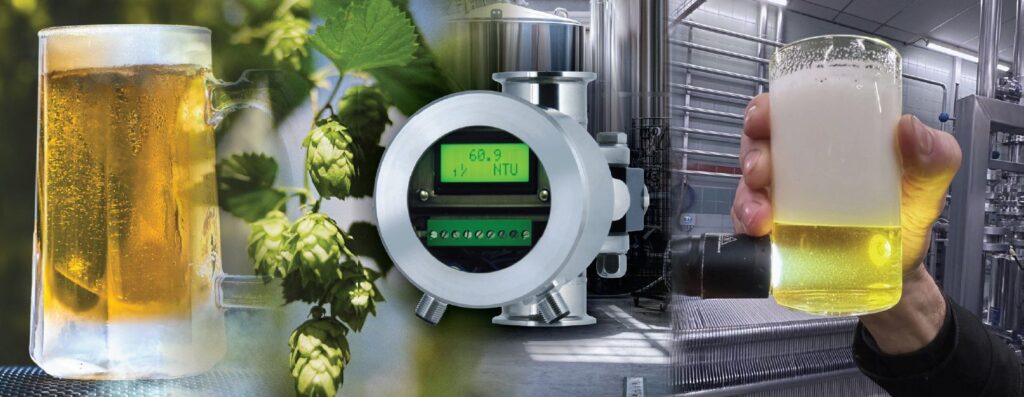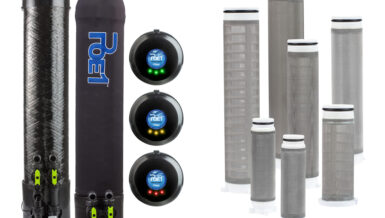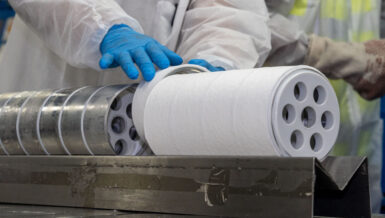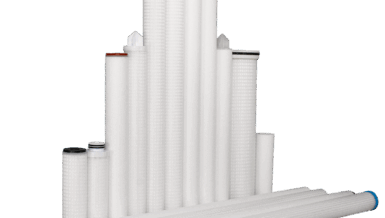Large industrial breweries with fully automated processes typically monitor the filter function and, at the same time, the dosage of filter aids made from diatomaceous earth, PVPP, and silica gel, using special turbidity sensors with a second measuring angle.
For cost reasons, small and medium-sized breweries often do not use inline monitoring of final beer filtration at all. This control step is ensured by visual inspection or manual sampling. In operations of this size, however, the filtration and stabilizing agents are usually mixed in the same dosing vessel, or crossflow filter systems without diatomaceous earth are used. A second angle is therefore not necessary for pure filter function monitoring.
For precisely these applications, a special test setup has now proven that the ITM-4DW Four-Beam Turbidity Sensor can offer equivalent, reliable filtration monitoring at a significantly lower cost.
The experimental setup
A test was conducted in collaboration with a brewery in the Netherlands, comparing an ITM-4DW turbidity meter with a competitor‘s device with 90° and 25° angles.
Various liquids were pumped through a pipe sequentially and the values measured by both sensors were recorded in succession. The liquids used were:
- Water
- Water with yeast, various concentrations
- Unfiltered beer
- Filtered beer
- Filtered beer with PVPP, various concentrations
- Filtered beer with silica gel and diatomaceous earth, various concentrations.

The results
Both sensors responded equally in all tests. In test 9 (see illustration), starting with filtered beer, both show a correct flat line. With each change caused by the addition of yeast, PVPP, or silica gel/diatomaceous earth, both sensors reliably showed a deflection in the measurement curves.
Regardless of the particle size, it can therefore be concluded that the ITM-4DW offers a solution for filtration monitoring to detect any malfunctions or filter breakthroughs, that is absolutely equivalent to the reference sensor with 90° and 25° angles.
Conclusions for final product filtration monitoring
The tests carried out clearly confirm that the ITM-4 turbidity sensor, with its very high measurement sensitivity starting at 0 NTU, is a solution that is equivalent to but significantly less expensive than the much more expensive dual-angle sensors.
For breweries that use a candle or layer filter with diatomaceous earth, but do not need to measure the PVPP or silica gel dosage for filter media optimization, the ITM-4DW offers reliable and extremely accurately programmable monitoring function.
For breweries that use cross-flow filtration without diatomaceous earth as a filtration aid, the ITM-4DW can also be used to create automated process monitoring. Any malfunction is detected, as the corresponding turbidity values also increase in this case and are immediately determined with superior measurement sensitivity.
In both applications, the ITM-4DW enables breweries to implement cost-effective, yet highly accurate and reliable automated inline process monitoring.
To download the Application Report with all details about all test sequences click here.











